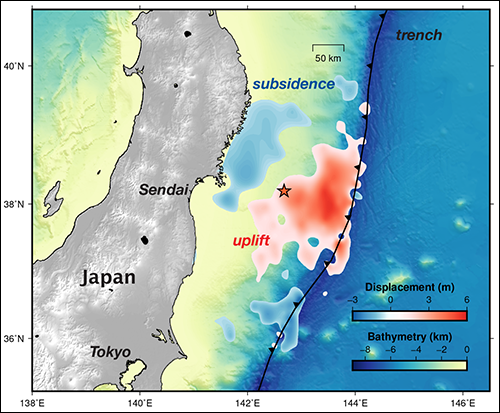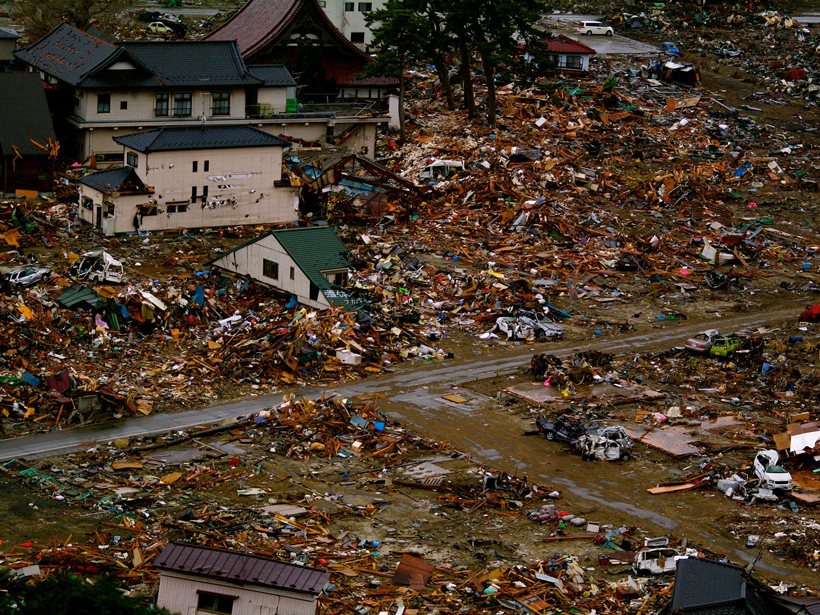Source: Journal of Geophysical Research: Solid Earth
In 2011, a magnitude 9 earthquake occurred off the east coast of Japan, setting off a major tsunami. Furthering the devastation, this tsunami led to meltdowns at the Fukushima nuclear power plant.
Various observations indicate that fault slip near the Japan Trench caused the underwater quake. The size and location of this event surprised scientists because conventional wisdom for subduction zones (where one tectonic plate slides below another) assumed the shallowest part of the fault is aseismic—in other words, generally free of significant seismic activity.

Using observations only of the tsunami, the researchers developed two models, at two different scales of resolution, to infer the earthquake’s likely seafloor displacement, the extent to which the seafloor shifts during an earthquake. According to these models, the tsunami was caused by the seafloor shifting upward about 5 meters over a wide area, but with the amplitude of uplift at a maximum about 50 kilometers landward from the trench. This uplift shifted massive amounts of seawater and tilted the seafloor near the trench toward the open ocean.
Looking at this quake in the context of other major earthquakes in recent years, the scientists concluded that the shallowest subduction zone near the Japan Trench is capable of hosting large seismic slip in response to larger deeper slip. In between major earthquakes, the shallowest parts of the primary fault most likely experience aseismic motion, the authors suggested.
Modeling the seafloor displacement from this event provides an illuminating visual of the characteristic features of tsunami-causing earthquakes. In the future, this visual could help scientists assess the potential of other shallow subduction zones around the globe to generate a large tsunami in the event of a major earthquake. (Journal of Geophysical Research: Solid Earth, doi:10.1002/2016JB013760, 2016)
—Sarah Witman, Freelance Writer
Citation:
Witman, S. (2017), An up close look at the megaquakes that cause tsunamis, Eos, 98, https://doi.org/10.1029/2017EO066705. Published on 25 January 2017.
Text © 2017. The authors. CC BY-NC-ND 3.0
Except where otherwise noted, images are subject to copyright. Any reuse without express permission from the copyright owner is prohibited.

